Lviv radiates history and culture. The city center mostly radiates liveliness and culture, whereas the cemeteries nearby invite us to learn the price to get here.
Going to Lviv on foot
Some language course participants and I decided to walk to the city center through the park someday. Because why use a bus or taxi when you can walk in 45 minutes and via the park?
As we walked, we noticed many old buildings and road — everywhere. The culture and history permeate almost every square meter of this city.
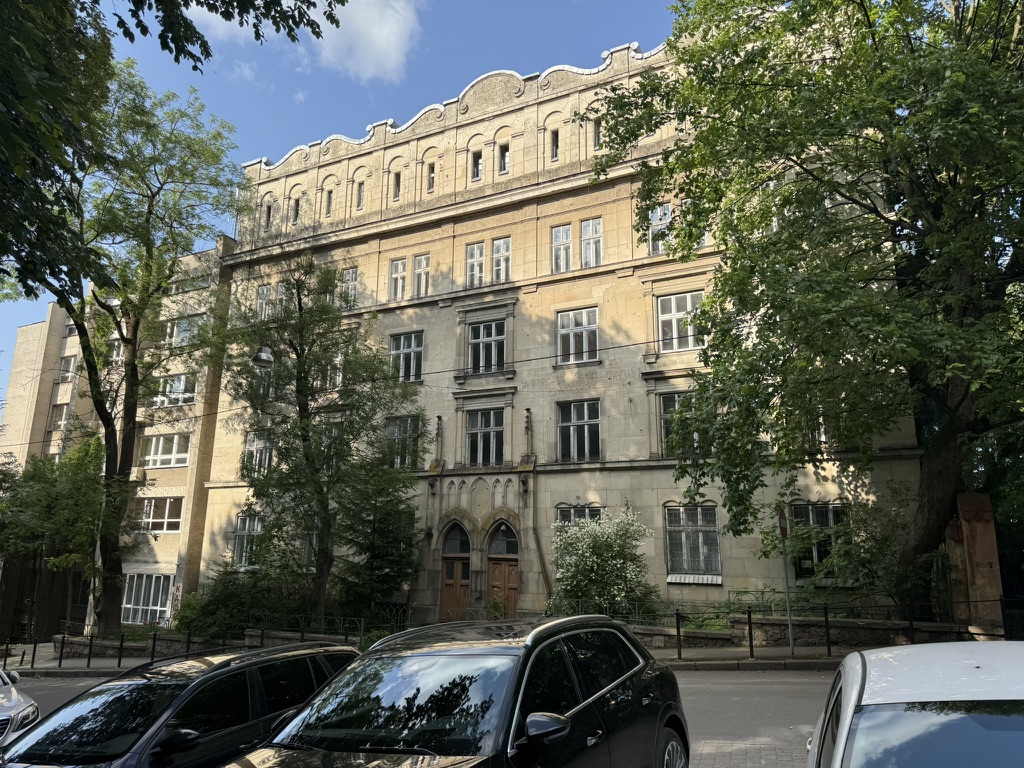

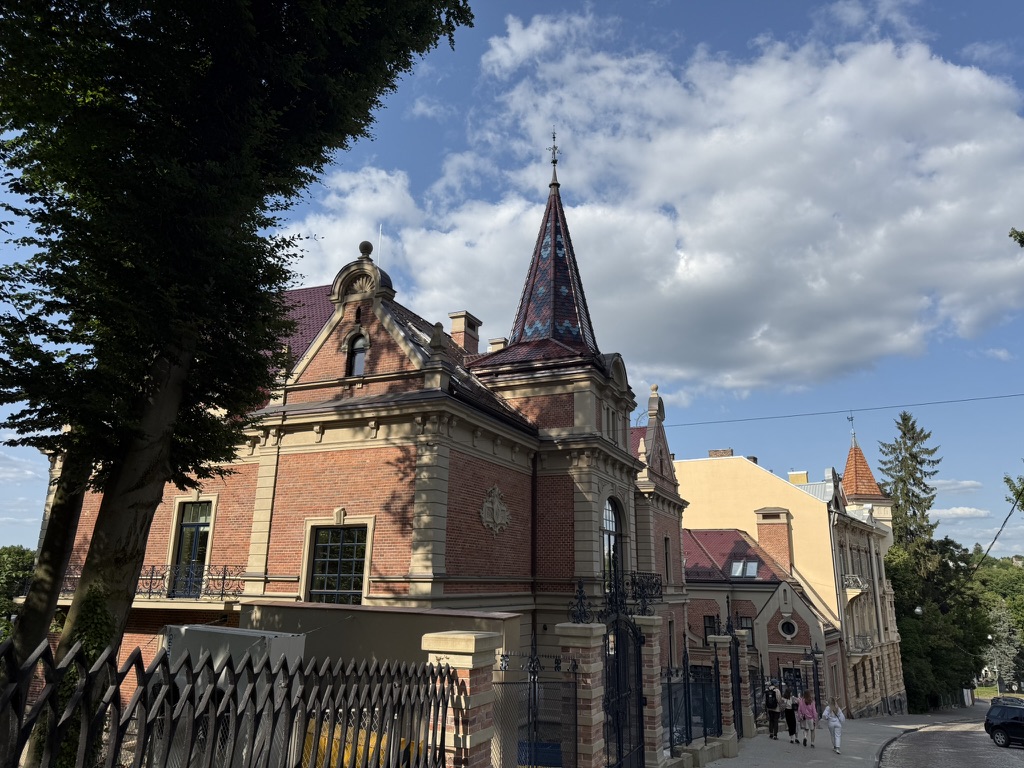
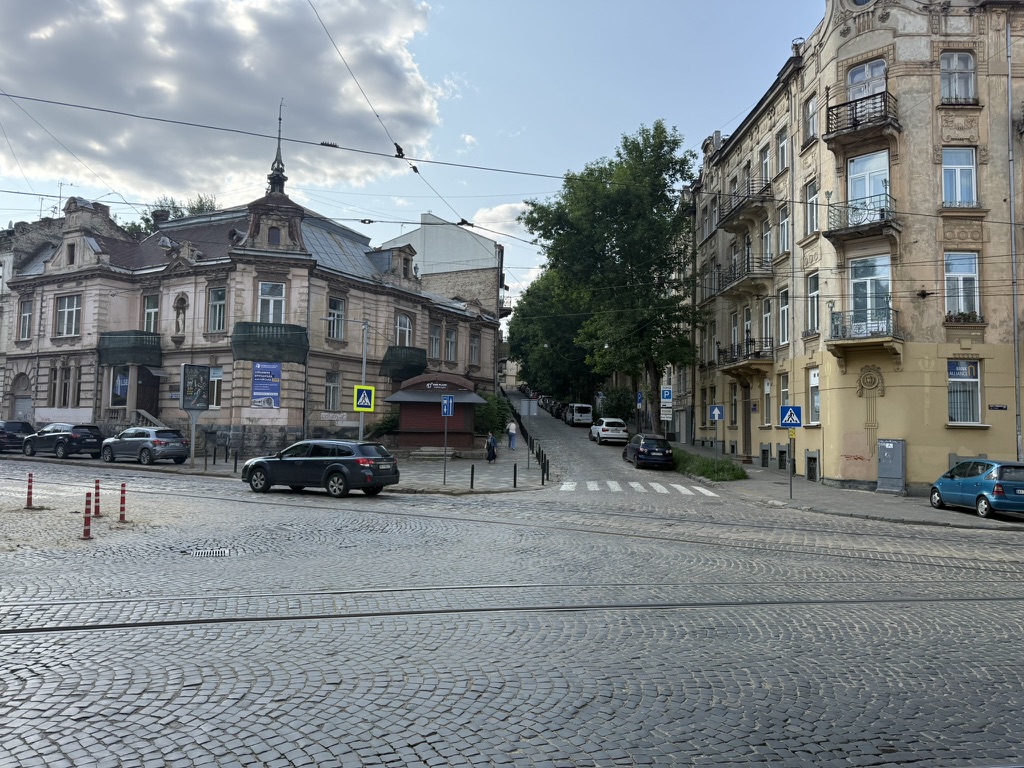
Fittingly, this walk ended up in the very spot where our guide started the Lviv city tour on day one. So, let me explain a bit about that tour.
Side-note: the Americans with whom I was walking were quite anxious to use the zebra crossings in the city with necessary “audacity” that city traffic demands. However, I must say that drivers in the city seem to drive reasonably safely — traffic can be a bit chaotic, but people seem to be prepared for it as well. There should be a market in Ukraine for Not Just Bikes, though…
Lviv is the old ‘city of lions’
Lviv was founded around 1250 by King Daniel of Galicia (Danilo Halitskyy/Romanovitsj) as a small stronghold. Strongholds were vital at the time to withstand the Mongol invasion (the ‘golden horde’), for instance.
King Daniel named it after his son Lev. The ancient history and significance of this city can be recognised far away. Under German and Habsburg rule, it had the name “Lemberg“.
The early core stronghold was about 500 by 600 meters, really not that big. Traces of the original borders can still be seen today. Cobblestones pave many roads — even a river (or rather: a road that used to be a river). Lviv has outgrown its stronghold boundaries quite a bit, of course.
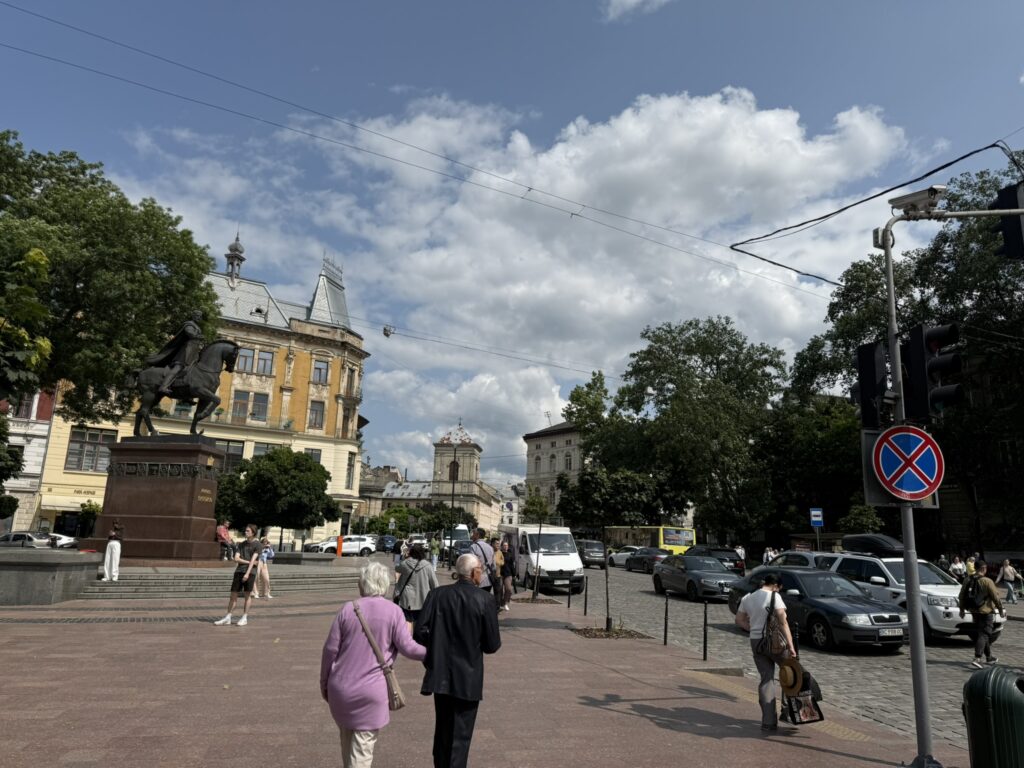
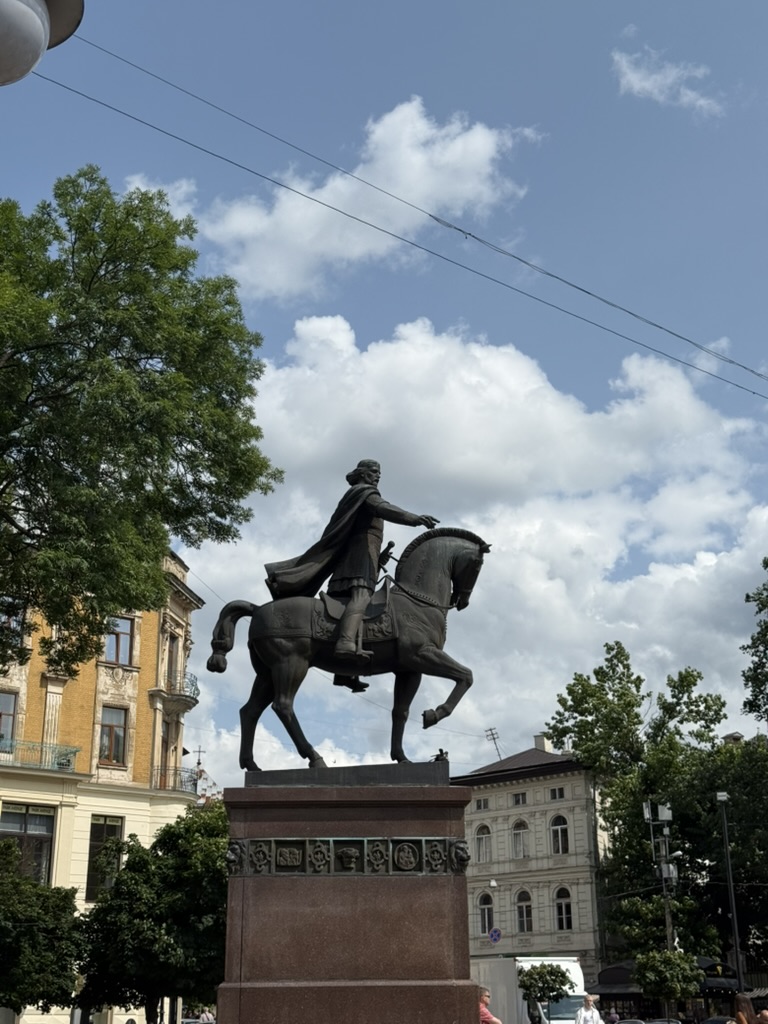
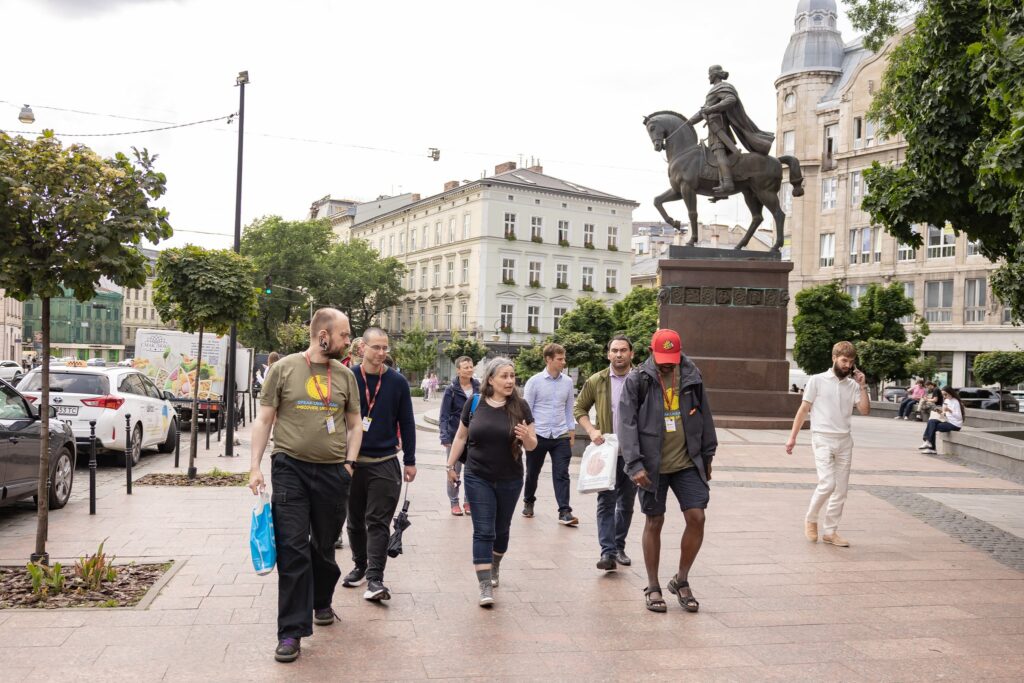
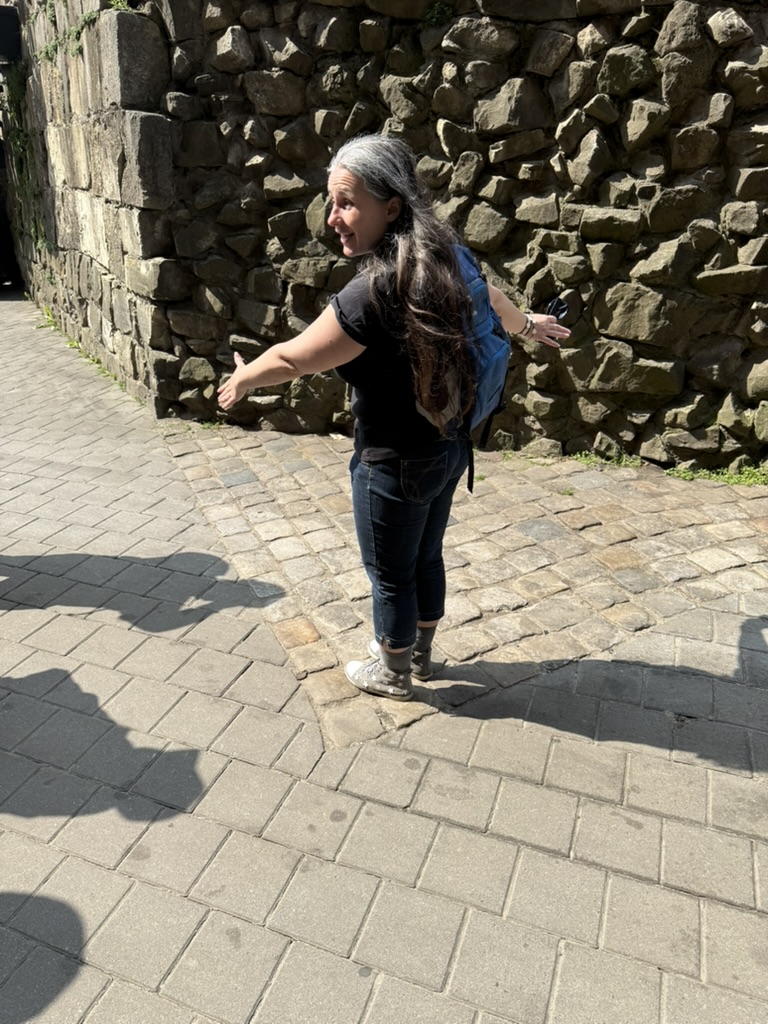
Lviv has quite some churches
The beauty and amount of churches are staggering. I haven’t counted them. Religion is very important to the Ukrainians — something we’ll revisit some other time.
We visited a (Jesuit) church which has 14 (!) altars. Why, you ask? A priest may (officially) only celebrate one Mass at an altar per day. So if you have a funeral, a baptism, and a sermon on one day — that’s already three altars you’d need! Scale matters!
We also learned about Ukrainian Catholicism. It’s an interesting form of Christianity — it is based on Greek Catholicism, has many Orthodox traditions but recognises the Pope in Rome. Its very existence is the result of the various political changes in the region.

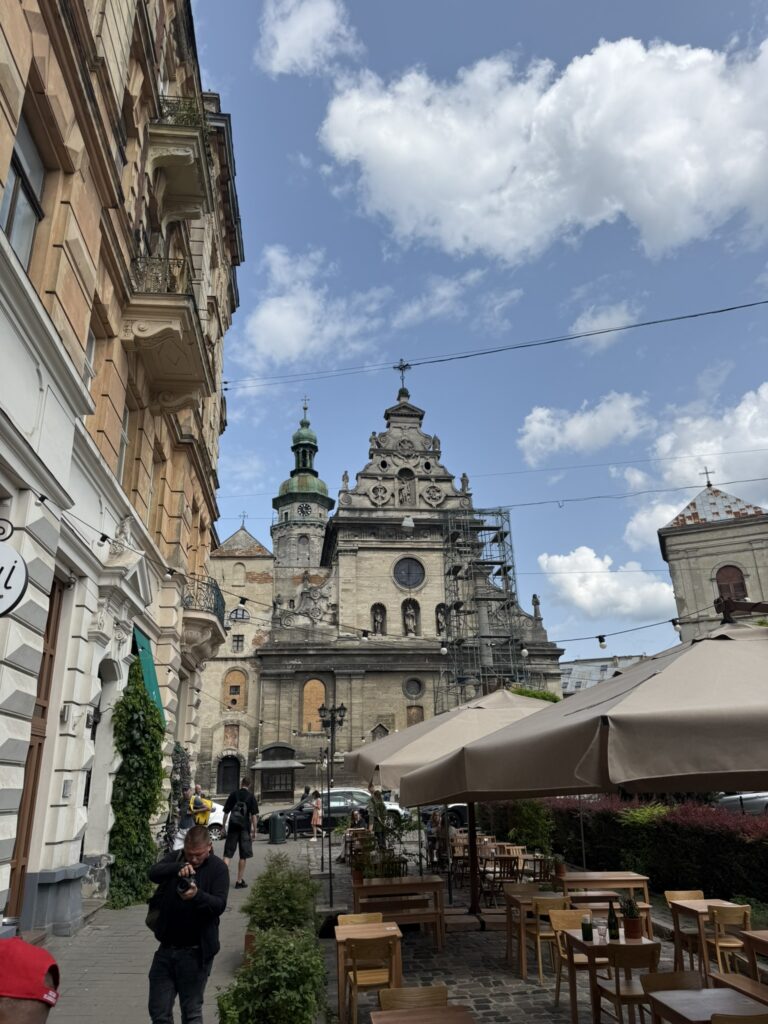
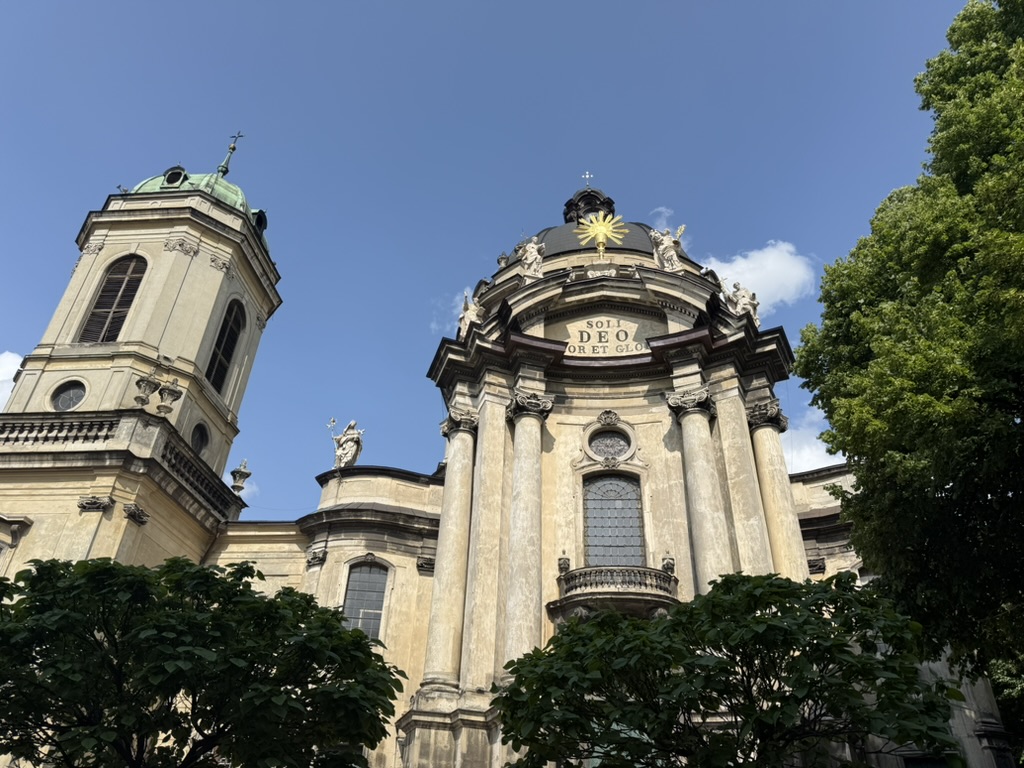
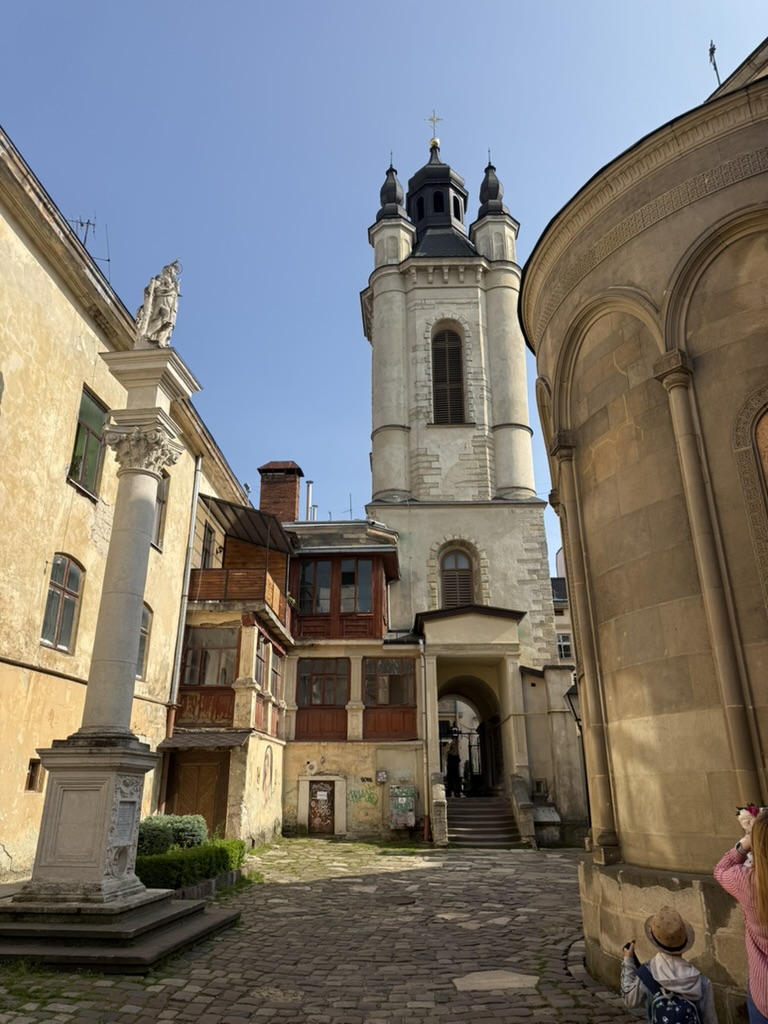
Lviv is multi-cultural
Ownership of the city changed many times — the Habsburgs, the Poles, the Soviets have all claimed the city at one time. It wasn’t all equally bad. The Habsburgs invested in the city and contributed the beautiful architecture. The old city was built by many cultures working together — Ukrainians/Ruthenians, Jews, Poles and Armenians made significant contributions, for instance.
The Ukrainians clearly distinguish the soviet times from the other occupations. The soviets were particularly brutal in their negligence or outright destruction. The soviets turned one of the most impressive churches into a warehouse. Many cultural sites and expressions (languages, plaques etc.) were forbidden, removed or let to wither.
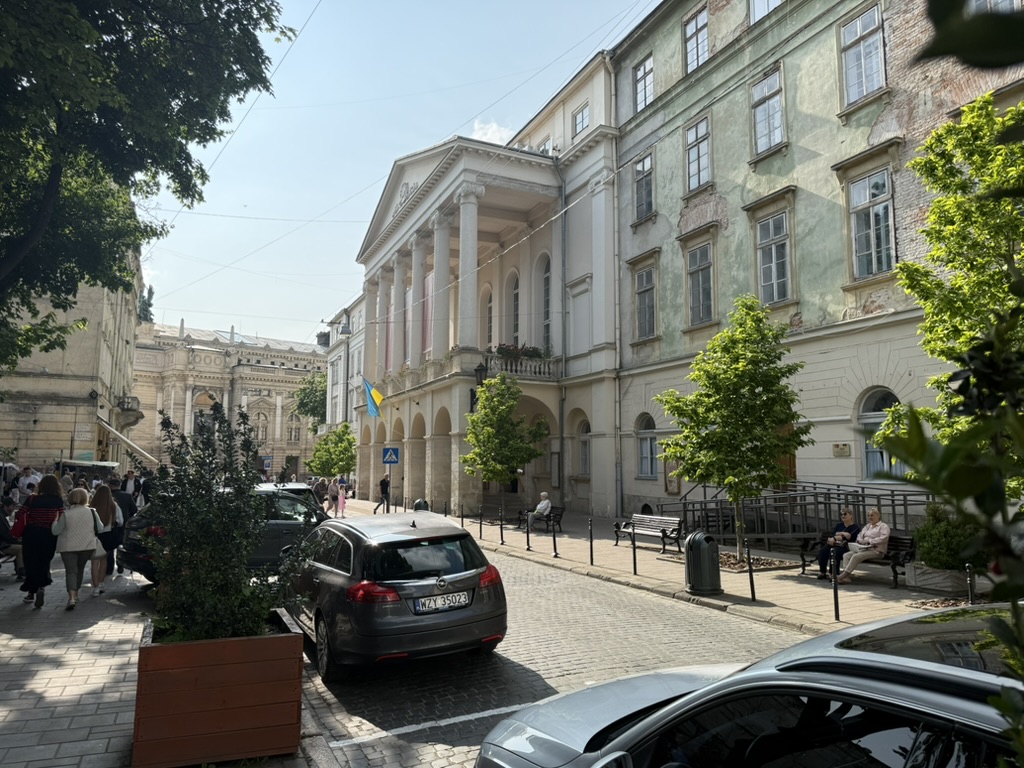
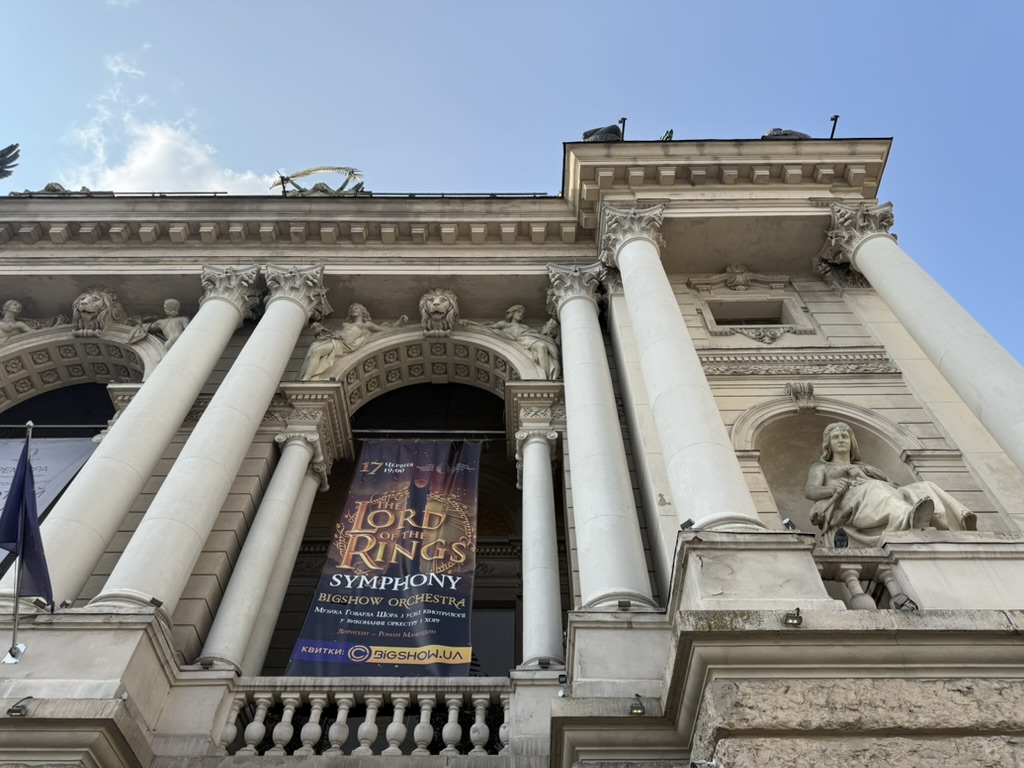
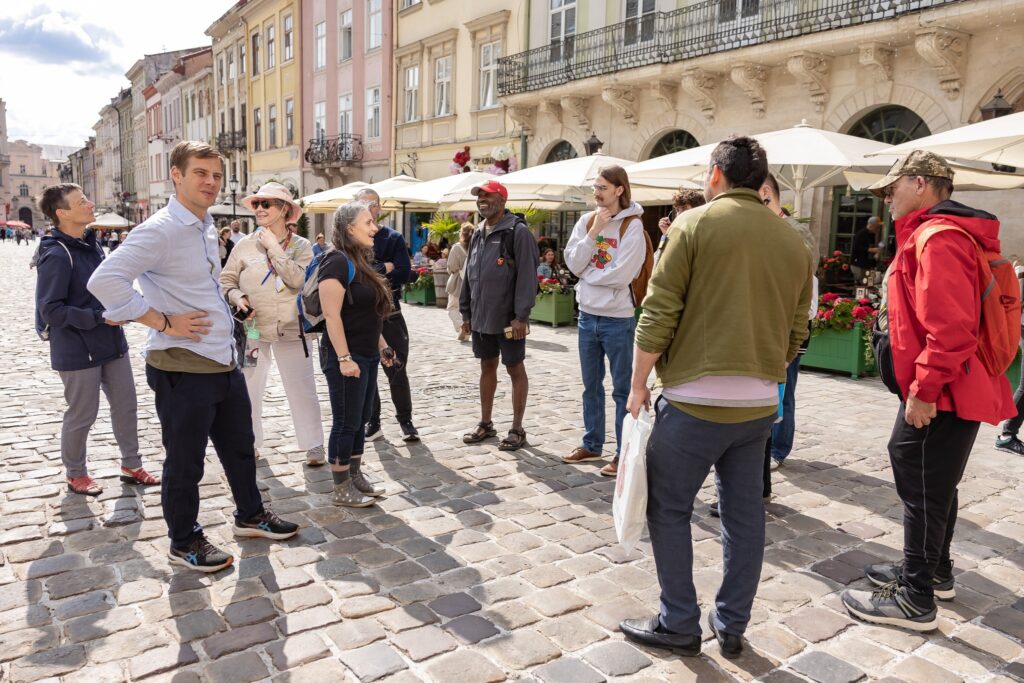

Lviv respects the dead
The other day, our guide Ivanka gave us a tour to two cemeteries. I will speak about one of these; the other cemetery will be discussed in another blogpost…
In one particular (quite beautiful) cemetery, the Lychakiv Cemetery, many famous Lvivian/Ukrainian artists are buried. As I explained in another post, the arts are very important to the Ukrainians.
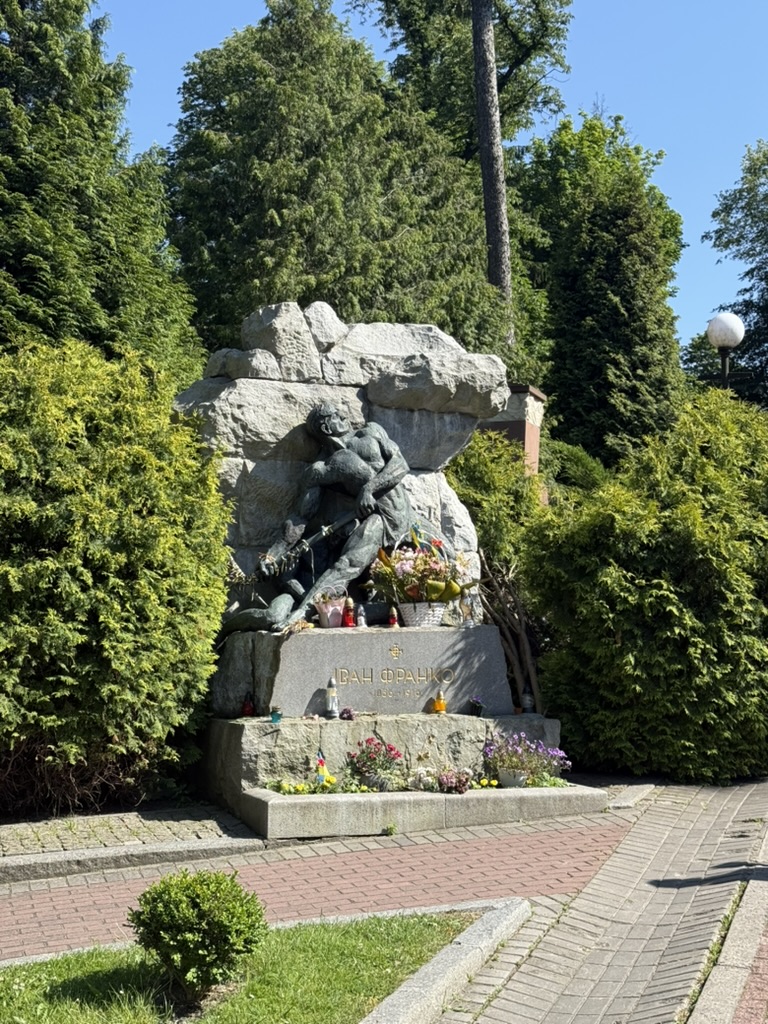

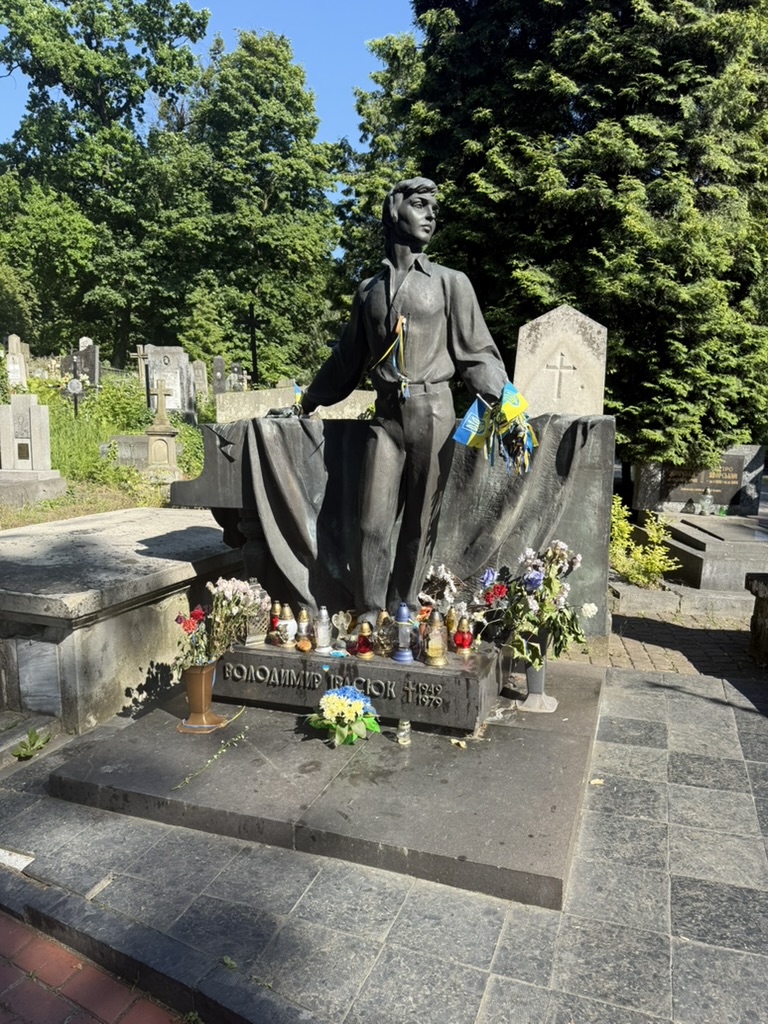
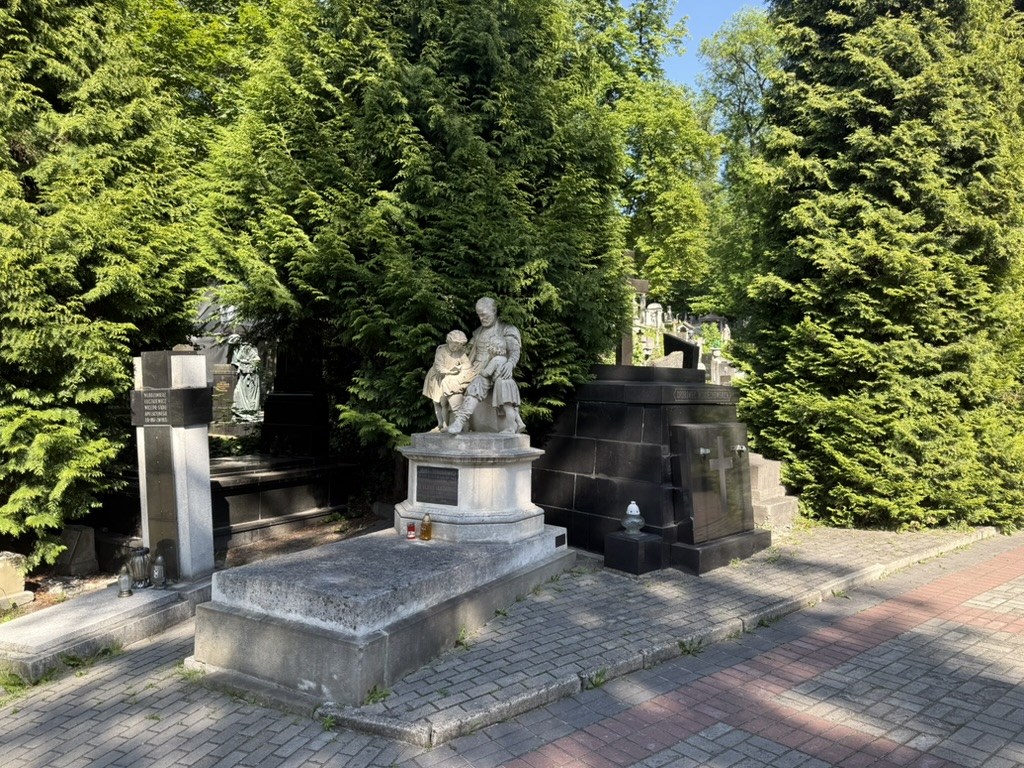

I heard many stories I am simply unable to reproduce. One of the statues was supposedly stolen and the trail led all the way to Lithuania. Another lived to a hundred years old! I suppose I should highlight Volodymyr Ivasiuk’s tragic story: he wrote a song “Chervona Ruta” (red flower) at 19 years old that is so famous to Ukrainians that it is considered a folk song — and he was murdered by the soviets at 30 years old.
Today’s aggression by russia isn’t the first war. Poles and Ukrainians were also at war from 1918 to 1919. The Ukrainians lost that war (initially), and some former enemies are buried on these grounds. How do I judge that? Should one bury the soldiers who tried to kill your people on your grounds? What’s the appropriate level of respect and dignity? What would you want to see happen if the roles were reversed? Some American fighters supposedly helped Poland in the Polish-Ukrainian war and the following Polish-Soviet war — how do you treat those?
The history between the Poles and Ukrainians is a very complicated one. Even today, there is tension around the recognition of who has done what. In this way, such tensions show war never really ends. Are at least, history will keep being used for political ends and rewritten until we value the lessons more than the battle.
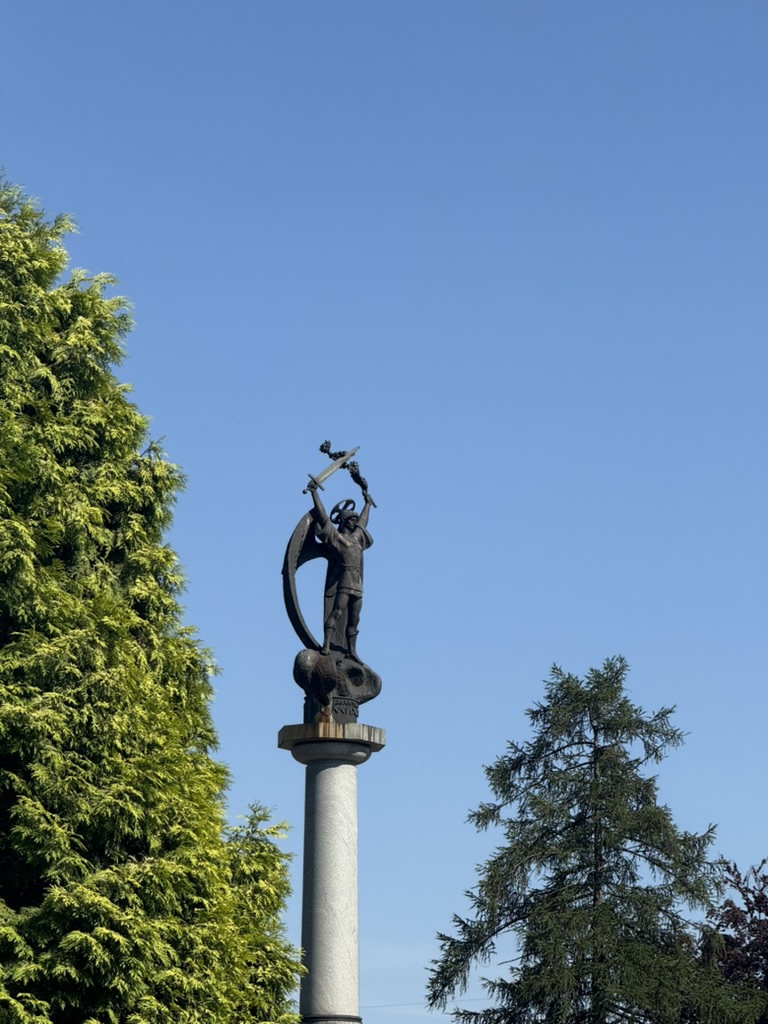
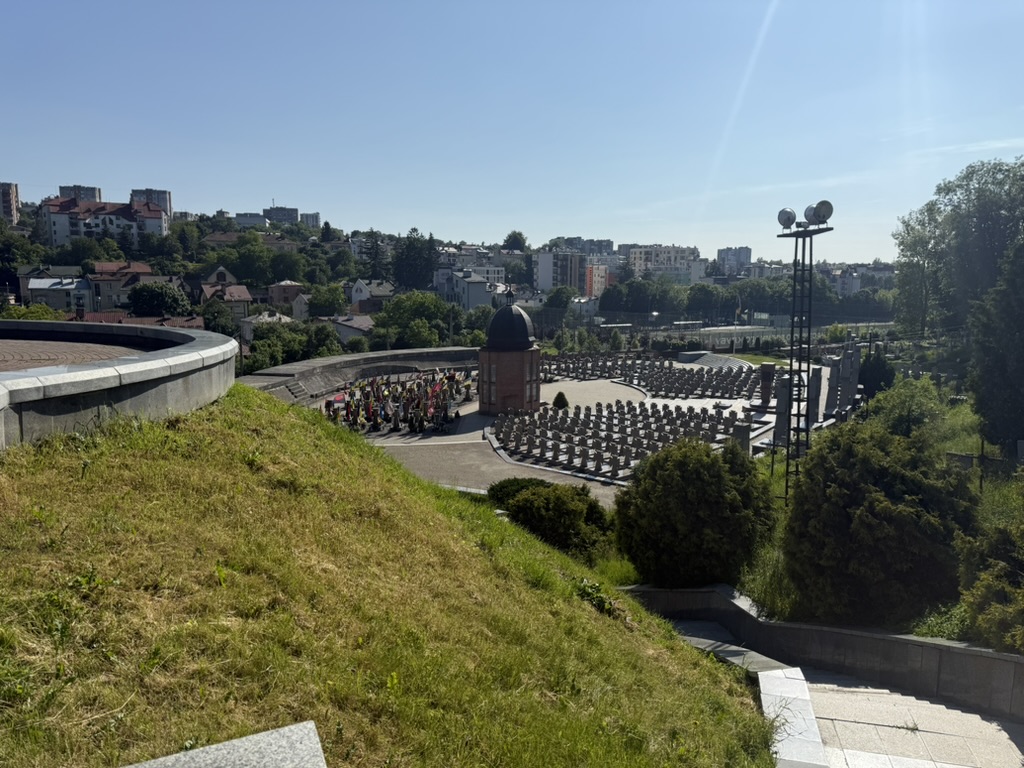
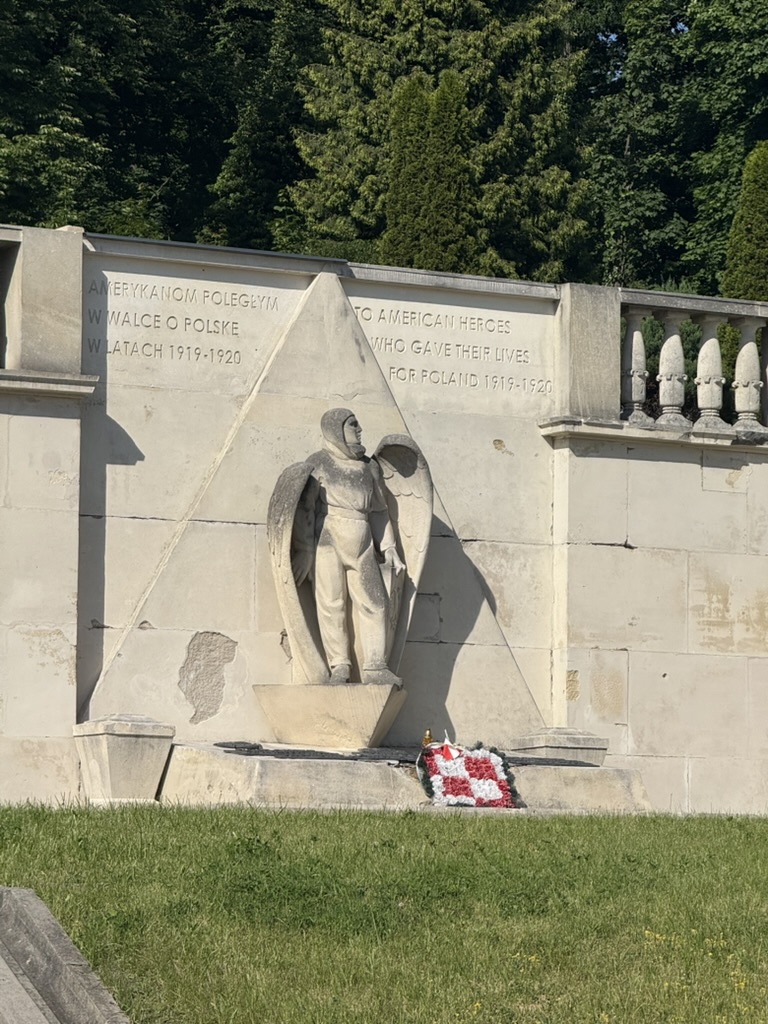
In conclusion
Lviv is a beautiful and lucky city. It is home to many of the greats. And despite switching hands so many times and despite the many wars, Lviv still stands. Even today, it is lucky — it has no military value and is far away from the front. Still, the faraway echoes of wars — current and past — ring true in this city. Lviv shows the never-ending cost of oppression and war, but it shows even more what a society can become if it celebrates diversity and dignity.
Acknowledgements
The city tour and cemetery tours were given by Ivanna Honak (PhD) — Lecturer at Lviv Institute of Interregional Academy of Personnel Management. An English- language tour guide of the city of Lviv and its surroundings with 20+ years of experience. Local ghost sign heritage guide-books author.

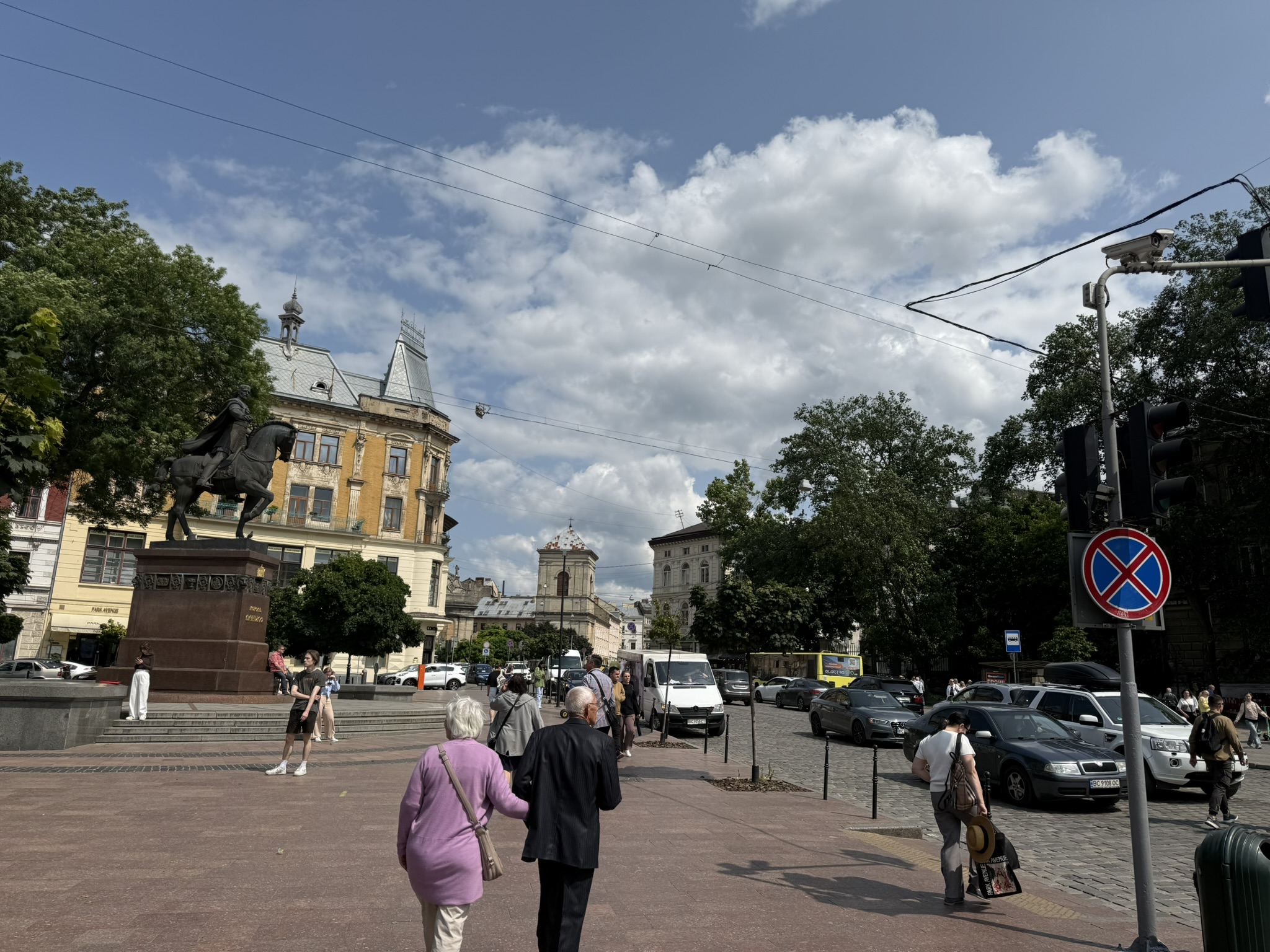
Wanno through your story I learn to know Lviv in another way, as a very interesting city. We think of stereotypes if we hear a name. If I hear ‘Lviv’: a city in a country in war with Russia, not directly at the front, it used to be Polish. You show us the normality of the city with its very strong roots in history. Thanks for your story, Charles